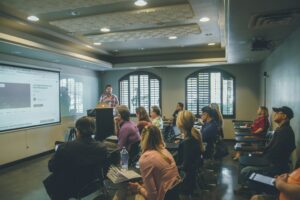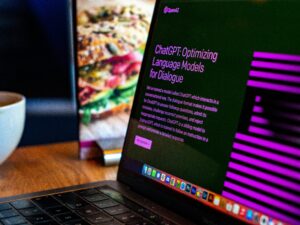Here is a compilation of responses I have made to my fellow classmate’s posts.
Hi Eleonora,
You really went above and beyond for this week’s reflection, wow! Thank you for providing open alternatives to those software. I used JIRA for previous co-ops and I wanted the chance to develop my skills with it better, so I will definitely look into using OpenProject!
I also found Jon Dron’s points about intrinsic motivation to be thought-provoking. I’ve often relied on external rewards like grades or deadlines to stay on track, but your reflection made me think more deeply about how this might be limiting my own drive for learning. I admire your openness to giving this new approach a genuine try. Going out of one’s comfort zone is intimidating but can be really rewarding!
Your example about learning a new language really hit home. I felt that way when I was learning how to read Korean, which is not something I did until later in life. It’s a good illustration of how our motivation can shift based on how we define success or progress.
Thank you again for your thoughtful insight!
Hi Hanne,
Thank you for your kind comment! This topic definitely interested us because we have experience with AI-grading (or maybe a better phrase would be “been victims of”) and it was interesting to hear that many others in the class had simlar experiences. As mentioned in the presentation, I believe that AI should be used as a tool to support decision making and relying on it to completely do your job is doing a disservice to everyone involved. AI is fantastic for reducing cognitive workload which makes it great for decision support, and when it’s used as intended people can get incredible value out of it.
That being said, there are a lot of things to look out for when it comes to AI. Aside from security and bias concerns, I think most of the issues around AI boils down to expecting people to use AI as intended, which is rare because we can never just have nice things. I think rules and regulations will be very important when it comes to AI-grading, since no student wants to have their assignment which they have dedicated lots of time to just lazily graded by AI in less than 10 seconds.
Thanks again for your input!
Hello Anna,
Thank you for sharing a thoughtful and honest reflection. I completely understand your concerns about the growing use of generative AI in education. I agree that there’s a real risk that relying too heavily on AI could undermine the deeply human elements of teaching. I have previously been in classes where my assignment details were obviously generated by AI as well as marked by it, which made me really disinterested in the class overall. It completely removed the moments of connection and responsiveness that I expected from my teachers; and frankly I am not impressed with paying so much for a class that can’t even provide me that.
Your point about how AI can’t truly grasp the unique emotional and cognitive needs of each student really stood out to me. Teaching isn’t just about delivering content, it’s about adapting to the nuances of each classroom and each learner’s journey. This is something that I learned when I was teaching my younger friends and was unable to effectively teach them since I could not understand their perspective.
Conversely, I think that AI can be a fantastic tool when it is used as intended; though I do recognize that this is often not the case. AI is great for automating tasks and reducing cognitive workload by providing quick suggestions for decision support. This can allow teachers to redirect their focus towards more meaningful tasks.
I definitely share your concern in how public perception of the teaching profession might be affected if AI is seen as doing the hard work of educators. Teaching truly deserves respect and recognition for the complex role it plays in shaping lives. I believe I am the way that I am because of the amazing educators I had in my life who encouraged me to keep pushing through.
Your commitment to being a present and authentic teacher is inspiring. Thanks again for such an insightful reflection!
Hello Eleonora,
Thank you for your insightful post, and I strongly agree with your points. As someone who also graduated during the peak of the pandemic, I’m very familiar with online sources and it has made more interested in learning from home. However, like yourself, I’ve experienced more “bad” online courses than good ones. I believe that the only reason I was able to somewhat navigate through those tough courses was from being digitally proficient. Expecting your students to have these skills is unrealistic, and I believe that those courses would have been so much better if the teachers were better at establishing their presence.
I liked the resource from the University of Colorado that you mentioned. Those strategies help break the ice and make students seem more than just names on a screen that occasionally interact with your posts. I was in some classes that implemented the strategies it mentioned and I really enjoyed those courses because of the social spaces they offered. For this course, I had fun personalizing my blog (mainly to show off my cat) and Mattermost was great for being able to talk directly to our professor as well as our learning pods.
I believe that a lot of people drop online courses because it’s hard to seek help and relate to other students when they just appear as names on a class list. Having social presence is still super important in online courses, and I agree that online courses should employ more strategies to foster these connections.
Hello Hanne,
I resonated with your blog post, thank you very much for sharing. As someone who was on the quieter side when I was younger, being included was a huge thing for me. Now that I’m older (and bolder), I make it a point to include everybody because I know what it’s like to have something to say but not really feeling safe enough to speak my mind.
Russell Lehmann’s quote really spoke to me because it highlights how inclusion isn’t just about allowing someone to participate. It’s about creating a space where everyone genuinely belongs. I love the idea of “building a new table together” rather than just offering a seat at the existing one. It shifts the focus from token gestures of inclusion to shared ownership. Inclusion should feel natural and empowering, not conditional or performative.
I have been in may situations where I felt that, although I was treated nicely, I didn’t feel like I belonged which made me feel less engaged and interested. Your blog post reminded me how important it is to be mindful of how we create environments where everyone feels valued and heard.






